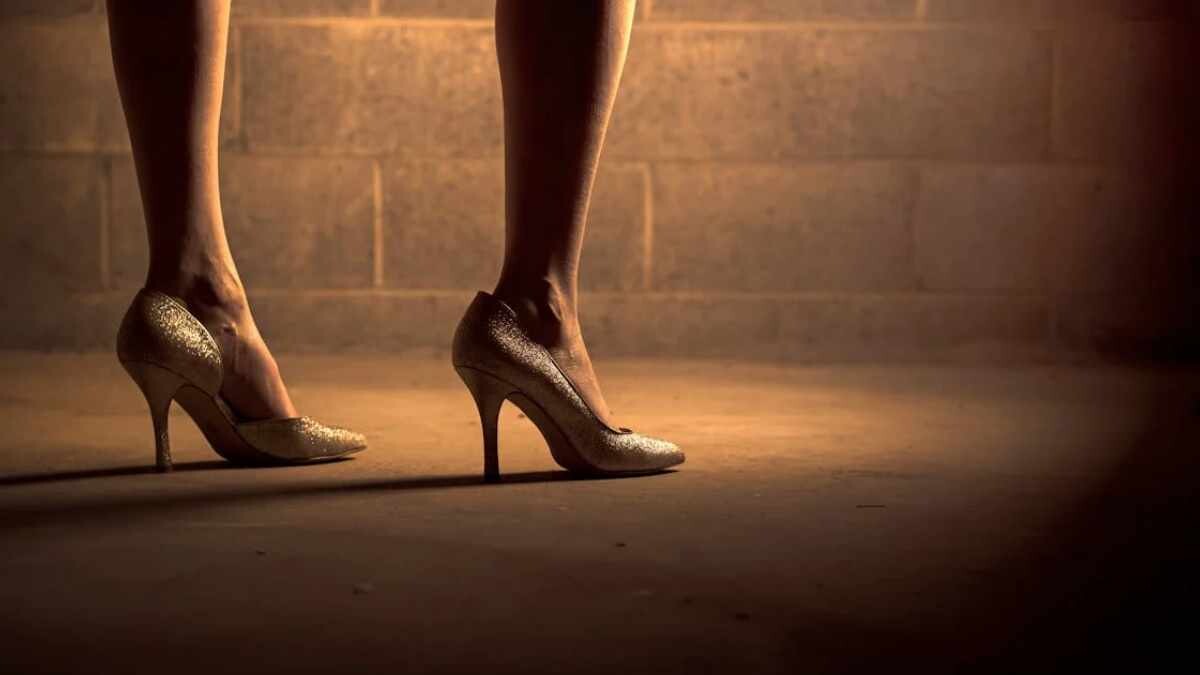Women across the globe possess at least one pair of high heels as a fashionable addition to their attire; it is an essential component of their ensemble, without which they feel incomplete. However, ladies, do you know that you doing more damage to your body than you can even think of?
High heels are elegant shoes and are suitable for any occasion, be it a professional setting or a glamorous event. However, it is not widely known that high-heeled boots were initially worn by men while riding horses to ensure their feet remained secure in the stirrups.
Eventually, around the 1600s, women embraced this trend, and now it has become an indispensable part of their wardrobe, without which they refuse to step out.

Photo credit: Pexels
What happens when you wear high heels
A significant amount of research has been dedicated to studying the mechanics of walking. Scientists, podiatrists, and shoe manufacturers have collectively invested numerous hours in exploring the most effective ways to move on foot.
One universally acknowledged truth that has emerged from these studies is that high heels can have detrimental effects on the body. Walking in heels causes a forward shift in weight, concentrating it on the balls of the feet rather than distributing it evenly across the entire foot.
This shift is crucial due to the structural differences between the heel and the toes. The heel consists of a single bone that absorbs and distributes weight to the tarsal bones in the ankle. In contrast, the toes are composed of 21 smaller bones that prioritize flexibility over strength.
Wearing high heels causes your foot to be positioned in a downward extended position, which in turn increases the pressure on the front part of your foot. Consequently, you need to make adjustments in the rest of your body to compensate for the change in balance.
Also Read: This is what happens when you consume expired medicines
To maintain a centre of balance, your lower body leans forward while your upper body leans back as a counterbalance. Consequently, this disrupts the alignment of your body, leading to an uncomfortable and rigid posture instead of a relaxed and natural one. In essence, the toes are not structurally equipped to bear the weight of the body.

Photo credit: Pexels
The impact on your body alignment becomes more pronounced as the height of the heels increases. With each additional inch of heel height, the pressure on the front part of your foot increases by 25 percent. Consequently, a three-inch heel exerts 75 percent more pressure than usual.
Even seasoned wearers will find that extremely high stilettos compel the body to shift its centre of gravity towards the hips, resulting in an abnormal curvature in the lower back.
The adverse consequences of wearing high heels
Claw toe
Claw toe is a frequent issue faced by women who regularly wear high heels. This deformity causes the toes to bend into a claw-like shape, resulting in severe pain and hindering normal movement such as walking or running.
Arthritis affecting the small joints of the foot
The excessive and continuous wearing of high heels can potentially result in the development of early small joint arthritis. Initially, this issue was predominantly observed in Western countries.
However, due to changes in lifestyle among Asians, the incidence of this condition is also on the rise in this region. Individuals affected by this condition may experience swelling and pain in their foot joints.
Leg and back pain
Your feet play a crucial role in supporting your entire body. Just like a building, if the foundation is not strong, the entire structure is at risk. Wearing high heels forces your lower body to lean forward onto your toes, causing your upper body to lean back to maintain balance. This unnatural posture puts excessive strain on your knees, hip flexors and lower back, potentially leading to misalignment of joints. Regularly wearing high heels can result in shortening and contracting of muscles and tendons, including the Achilles tendon, making it challenging to walk comfortably, even in flat shoes.

Photo credit: Pexels
Overlapping of toes
The overuse of high heels may lead to uncomfortable toe crowding and potential abrasions on the toes and heels. It is advisable to switch to more comfortable footwear and utilise shoe cushions to give your feet a much-needed break from high heels.
Ankle sprains
Research indicates that individuals who wear high heels have a 40 percent higher risk of experiencing ankle sprains. Prolonged ankle sprains can lead to weakened and unstable joints.
Corns and calluses
Wearing high heels can subject the toes and balls of the feet to pressure and friction, which may lead to the formation of corns and calluses. These hardened patches of skin not only cause discomfort but also detract from the overall appearance. Additionally, the continuous friction can result in blisters and sores, making the experience of wearing high heels less enjoyable.
Bunions
Bunions are a prevalent foot deformity identified by a protruding bony growth at the joint of the big toe. Opting for high heels with a constricted toe area may amplify the progression of bunions or aggravate pre-existing ones. The limited room within the footwear compels the toes into awkward positions, heightening the likelihood of bunion formation.
Ways to avoid or reduce the unpleasant effects
- Opt for flat shoes or footwear that offer enhanced support and cushioning.
- Vary your workout regimen to lessen the strain on your knees, hips, and lower back. Consider incorporating low-impact exercises like rowing, swimming, or using the elliptical machine.
- Limit the number of days you wear high heels and consider integrating flats or wedges into your footwear rotation.
- Choose heels that are shorter in height, preferably two inches or less, to reduce pressure on your joints.
- Insert cushions into your shoes and heels to increase comfort and support for your feet.
Read all the World News, Business News, Sports News, Entertainment News, Business News and Opinion here. Follow us on Facebook, Twitter and Instagram
